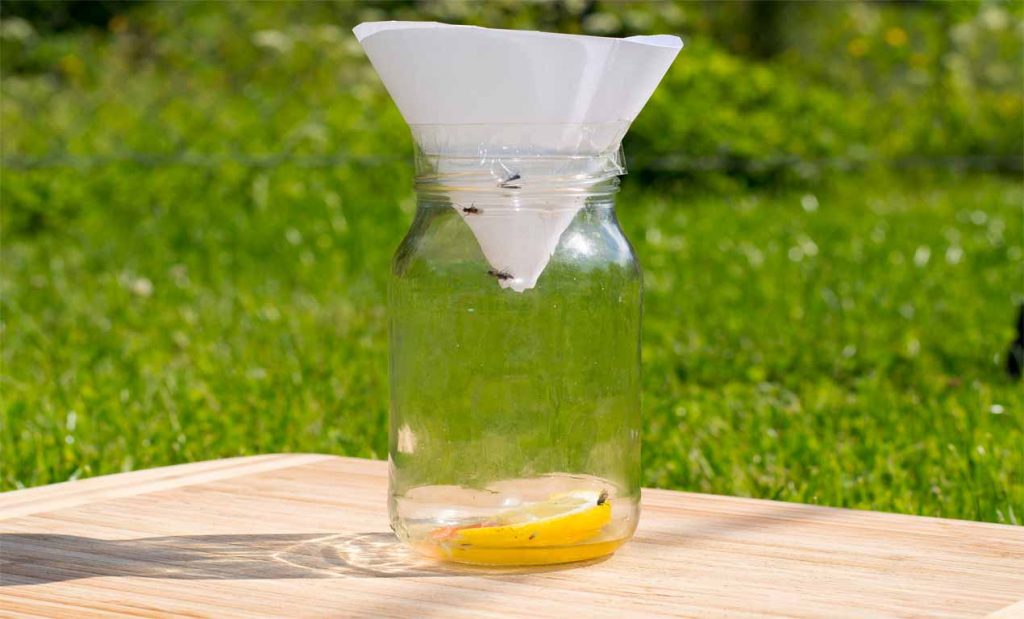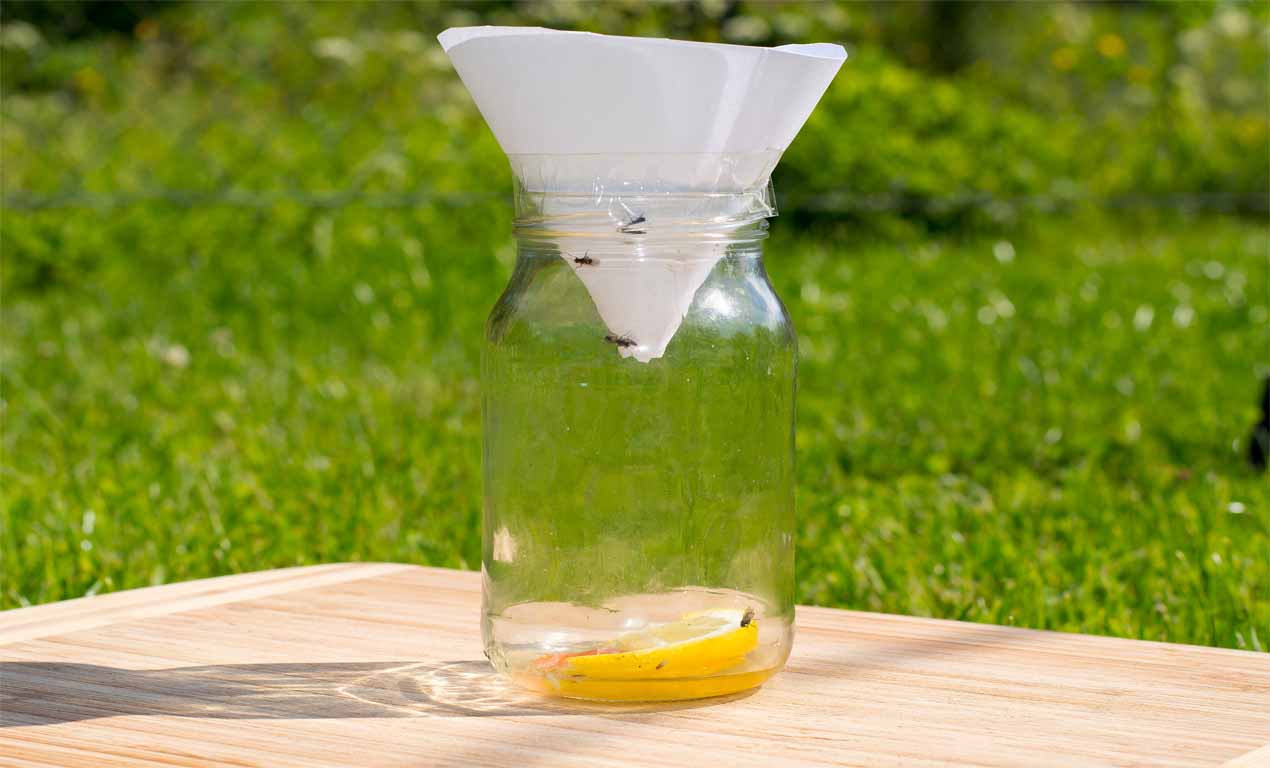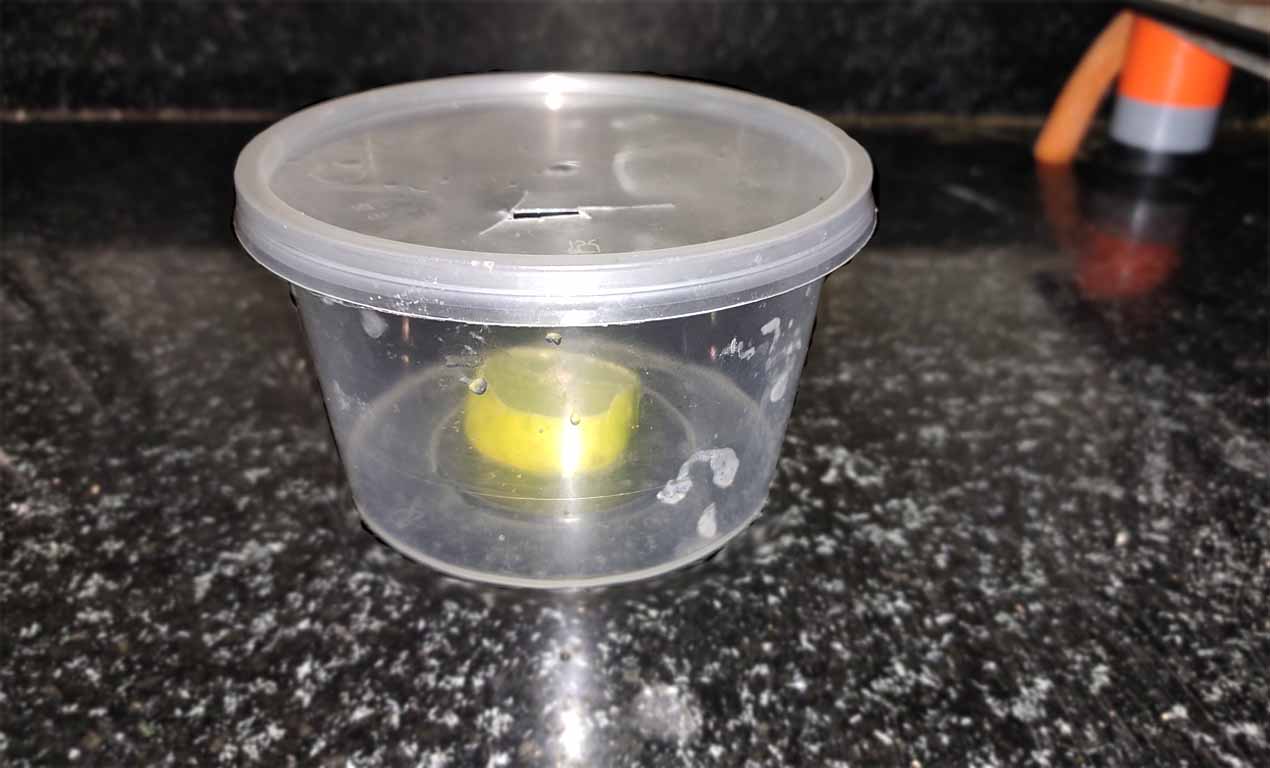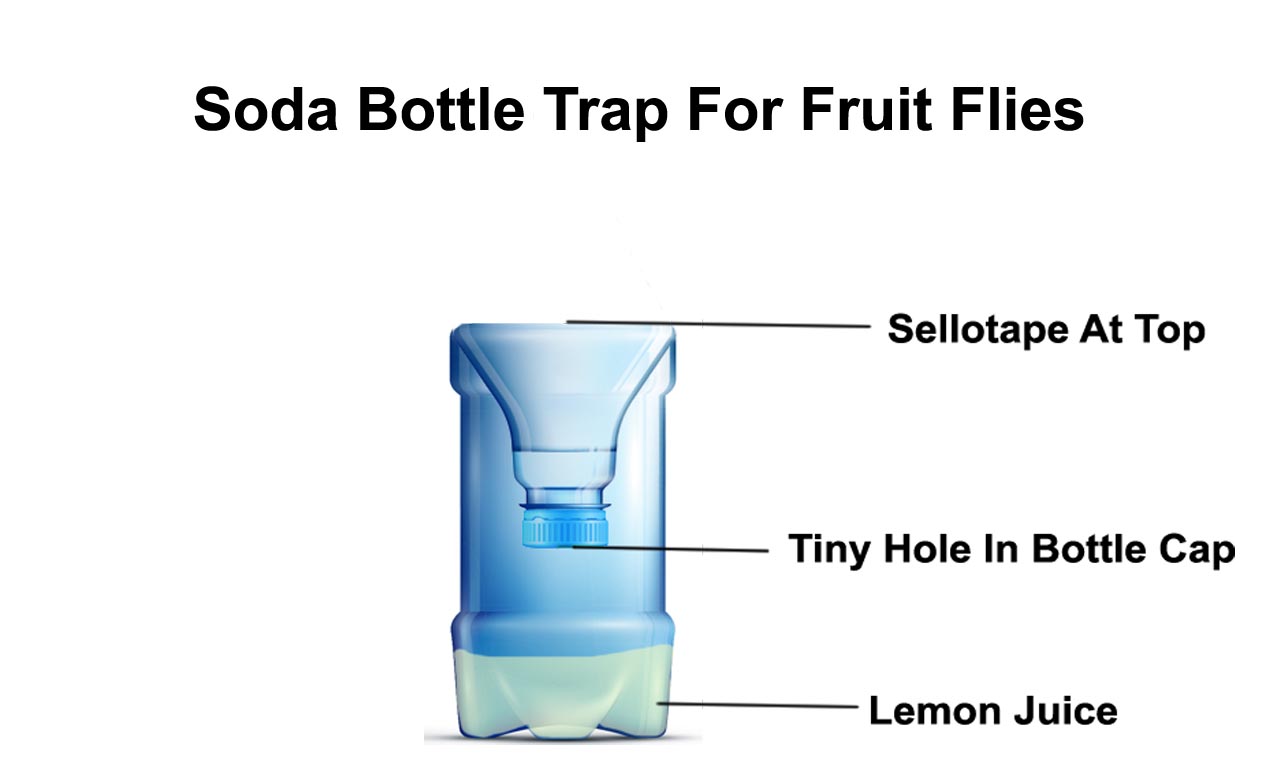
 There are two families, Tephritidae and Drosophilidae, who get referred to as fruit flies. Lets quickly have a look at both of them. Their size varies between one-tenth to one-fourth of an inch. Males are shorter than females. They can be very problematic. They can do severe damage to fruits and vegetables. It’s better to get rid of them the moment you see them, and lemon is one of the remedies that work well to get rid of them.
There are two families, Tephritidae and Drosophilidae, who get referred to as fruit flies. Lets quickly have a look at both of them. Their size varies between one-tenth to one-fourth of an inch. Males are shorter than females. They can be very problematic. They can do severe damage to fruits and vegetables. It’s better to get rid of them the moment you see them, and lemon is one of the remedies that work well to get rid of them.
So, how to get rid of fruit flies with lemon? The easiest way is to use a trap to get rid of them. Just add some lemon inside the trap, and that will do the job for you. Fruit flies like the smell of lemon, and that’s why these traps work so well. The design is unique; fruit flies can get in but can’t get out.
Continue reading to know about these traps in details.
Drosophilidae
This family consists of many flies, including fruit flies. This variety of flies is mainly composed of post-mitotic cells, shows gradual aging, and has a short life span. They get considered as a nuisance than actually a pest since they live in rotting materials. However, some of the species get known to destroy crops of figs, raspberries, and cherries. They get known to spread acetic acid bacteria among these crops, leading to beer and wine taste like vinegar after fermentation.
Odor detection:These fruit flies have a strong sense of detecting an odor, especially fermenting fruits, from far away.
Access:It quickly reaches the site due to its tiny size and availability of access. Another method to access your site is thro’ the fruits themselves. If the fruit fly has laid eggs inside the crate of fruits, they would require just eight days to reach adulthood and buzz all-around your space. The female fruit fly can lay over five hundred eggs in its short lifetime.
Beer lovers:Fruit flies mouthparts have a high affinity for glycerol, which gets found in large quantities in fermented beer. Spilled beer, half-filled beer bottles lying at the corner, the dirty mop with which you had cleaned the spilled beer are sure-shot fruit-fly habitat. They would buzz in these areas and, if found suitable, lay their eggs too, so more can breed. The larvae just need decaying organic matter to feed from.
Appearance:The common fruit-fly is also known as Drosophila Melanogaster. The adult fruit flies are three to four millimeters long, have red compound eyes, the thorax is brown, and the abdomen is black. They are grey on the underside of their body. They appear tan in color.
Lifecycle: Like all flies, they have four stages of egg, larvae, pupa, and adult. From egg to young adult stage, fruit-fly takes around a week under ideal conditions. Their adult stage lasts around a month. The female fly identifies rotting fruits to lay her eggs so that the larvae have enough decaying organic matter to feed on. Other damp and moist environments, like the garbage pile, inside drainage, and around compost in the garden, are similar habitats.
Eggs take typically twenty-four hours to hatch into pale larvae, which feeds around their nesting environment for around four days. Fruit-fly larvae undergo molting, where they shed their head, mouthparts, cuticles, and spiracles. Once the larvae get mature, they crawl away to a dry spot to enter into their next development stage, the pupa.
The skin of the larvae darkens and hardens into a hard case known as the puparium. During the pupa stage, they develop their head, thorax, and the abdomen, along with their wings and six legs. This stage lasts for around another four days. The pupa skin darkens, and the young adult emerges from this hard enclosure. They have red compound eyes, pale-looking bodies, and elongated wings and abdomen. Within the next couple of hours, their body color darkens, and their wings get strengthened, for them to fly away.
Female fruit flies are sexually mature within forty-eight hours from birth and can receive sperm parcel from the male and fertilize her eggs for the next ten days.
Research:Fruit-flies get used in research extensively concerning their life span, their pathogen carrying tendencies, and mutation among flies.
Tephritidae
This variety of fruit-flies are also known as peacock flies. Their length varies between two to ten millimeters. They are often colorful, with patches on their wings. Some flies also have clear translucent wings. Their body ranges between yellow, white, and brown.
The female flies lay her eggs on plants: either their leaves, stems, or roots. The hatched larvae feed on these plant parts and are mostly phytophagous. Some are monophagous, i.e., feed on only one type of plant. The adult has a short life of around a week.
Some of these fruit-flies have varied body color and undertake extensive mating rituals. Most get found feeding on flowers, nectar, pollen, seeds, and fruits of plants.
Pests:These species of fruit-flies get known to destroy crops. Bactrocera variety gets known to feed on olive plants, and if unchecked, they can destroy the entire olive crop, including the olive fruits. Bactrocera Dorsalis get known to damage the fruit, vegetable, and nut crops. Eulalia Heraclei geet known for destroying celery and parsnips.
Strauzia Longipennis get to know to destroy sunflower crops, and Rhagoletis Mendax attack blueberries crops. Mediterranean Fruit Fly or the Medfly is another variety that attacks fruit orchards. Some of these fruit flies lay eggs on unripe fruits; thus, they get destroyed by the hatched larvae before they could even ripen!
Fruit Fly Control
Fruit-flies are pests, found the world over. They get into a human household and spoil the fruits lying on the kitchen table. Even when the adult gets taken care of, the eggs laid by them in the surrounding area are active after a few days with the young adults buzzing around. They seem to be unstoppable. Let’s look at how to control them with lemon.
Lemon Trap 1
 What you need: You will need a small plastic container, which is microwave proof and a lemon. The lemon need not be fresh. Slightly rotten lime, which you will not consume, will also do.
What you need: You will need a small plastic container, which is microwave proof and a lemon. The lemon need not be fresh. Slightly rotten lime, which you will not consume, will also do.
What to do: Take a sharp knife and slice a flat piece of lemon. Squeeze the balance lemon into the container and place this lemon slice inside. Pierce, the lid of the container with small openings, enough for the fruit-flies to pass through inside, but cannot get out.
Place the lid firmly on the container and place it near the fruit-flies are most active. These flies get very attracted by the smell of lemon juice, which would entice all of them to get into the holes and inside the container.
Once you trapped enough number of these fruit-flies, place the container inside a microwave oven. Operate the oven on high for fifteen to thirty seconds. All the fruit-flies would die inside the container. Dump the dead flies in your garbage bin and repeat the process till you are free of fruit-flies in your home.
Lemon Trap 2
The common fruit-fly is also known as vinegar fly. All fruit-flies, including medflies, love the smell of lemon, fresh or rotten. Take a slice or two of lemon, and place it on a microwave-safe, disposable dish. Keep this dish inside a microwave with its door a little ajar.
Soon you will find the fruit flies getting attracted to the aroma of lemon, making their way into your microwave and settling down on and around the lemon. Once you sizable number inside, close the door and operate the microwave for a minute or two.
Switch off the oven, open the door and dispose of the dish along with the dead fruit-flies into your trash bin. Clean the inside of your microwave oven for any remnant dead flies, before your next use. Repeat this process until you are rid of all the fruit-flies swarming your home. The smell of lemon would also leave a great aroma in your kitchen!
Some More Trap Settings
Keeping the above formula in mind, let’s look at some common DIY ideas in terms of creating the trap for the fruit-fly:
Soda Bottle Trap
 What you need: Take a pet soda or water bottle, a sharp knife, and sellotape.
What you need: Take a pet soda or water bottle, a sharp knife, and sellotape.
What to do: Cut the bottle near one-fourth height near the top. Make a small hole in the cap so that the fruit-fly can get through. Place some squeezed lemon juice inside the bottle and place the top part of the bottle, upside down, into the bottle. Seal the edges with the sellotape, so that the fruit flies do not escape. Place this trap near your fruit-fly infestation and get hold of as many flies as possible and dispose of them.
Paper Cone Trap
 Required: You require a wide mouth jar, lemon, sellotape, and a paper cone.
Required: You require a wide mouth jar, lemon, sellotape, and a paper cone.
To do: Place some lemon juice inside the jar. Cut a small hole on the apex of the cone, enough for the flies to get through. Place the cone inside the jar, without the bottom touching the lemon liquid below. Fix a sellotape around the paper cone touching the mouth of the jar, so that the flies do not escape. The trapped fruit-flies can get eliminated through the microwave method.
Tumbler Trap
Requirement:A glass tumbler, cellophane pap, rubber band, and lemon
Steps:Squeeze lemon juice into the glass tumbler. Close the glass with cellophane paper from the top with the help of rubber-band. Make small holes on cellophane for the flies to go in. Other steps are similar to the above.
Conclusions
Fruit flies get considered pests. Since they get lured with the aroma of lemon, various gets created to trap them and kill them.
Welcome to my blog. I have been doing pest control for years since my house, garden and pets were always attacked by various kinds of pests and as a result I had to know proper pest control techniques that works. In this blog I share all the tips and tricks that I know and I hope you’ll find it helpful.
